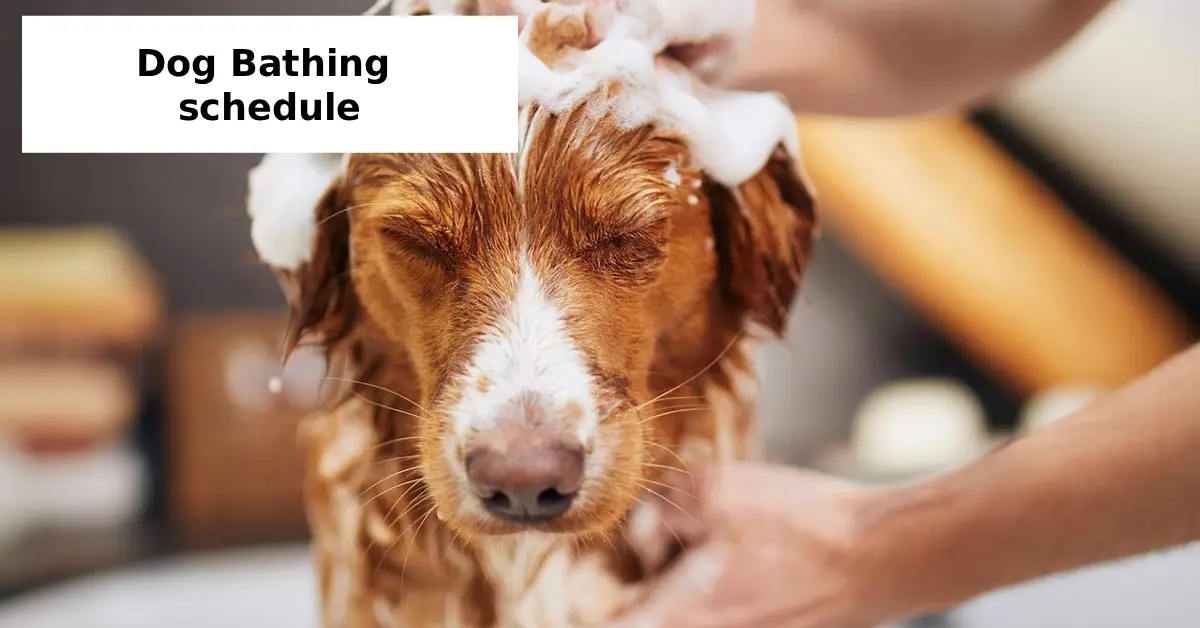Maintaining a dog bathing schedule is essential for your furry friend’s hygiene, skin health, and overall well-being. Whether you’re a new pet owner in the U.S. seeking structured dog care routines or a busy professional needing a reliable plan, a consistent bath routine can help reduce odor, shedding, and skin irritation. But how often is too often? And which products should you use? Let’s dive into expert-led advice on building a dog bathing schedule that suits your dog’s breed, lifestyle, and health needs.
Why a Dog Bathing Schedule Matters
A thoughtful dog bathing schedule ensures your dog stays clean without drying out their skin or disrupting natural oils. Overbathing can lead to irritation, while underbathing may cause unpleasant odors, dander buildup, or skin infections. For families with indoor dogs needing regular bathing advice, having a routine avoids guesswork and keeps your pet looking and feeling their best.
Veterinarians and grooming professionals agree: structured bath routines are a core part of dog hygiene schedules, alongside brushing, nail trimming, and ear cleaning.
How Often Should I Bathe My Dog?
The answer to how often should I bathe my dog depends on several factors:
- Breed Type: Dogs with oily coats (like Basset Hounds) need more frequent baths than dry-coated breeds (like Huskies).
- Activity Level: Active dogs who spend time outdoors get dirty faster and need more frequent washing.
- Skin Conditions: Dogs with allergies or skin sensitivities may need medicated shampoos and tailored schedules.
- Climate: Dogs in hot/humid U.S. states (e.g., Florida, Texas) may require more frequent baths to stay fresh.
General guidelines:
| Dog Type | Bathing Frequency |
|---|---|
| Short-haired breeds | Every 4–6 weeks |
| Long-haired breeds | Every 4 weeks |
| Allergy-prone dogs | Every 1–2 weeks |
| Active outdoor dogs | Every 2–3 weeks |
| Low-activity indoor dogs | Every 6–8 weeks |
Yes, you can bathe your dog every week — but only if you use the right products, especially if your dog has sensitive skin.
Choosing the Best Dog Shampoo for Sensitive Skin
Selecting the best dog shampoo for sensitive skin is crucial. Look for sulfate-free, hypoallergenic, and pH-balanced formulas. Natural ingredients like oatmeal, aloe vera, and chamomile can help soothe irritation.
Recommended options for sensitive dogs:
- Vet’s Best Hypo-Allergenic Shampoo
- Burt’s Bees for Dogs Oatmeal Shampoo
- Earthbath All-Natural Pet Shampoo
Also, many pet parents with allergy concerns related to dog dander find that gentle shampoos reduce allergens significantly. For between-bath cleanups, consider dry dog shampoo USA products like Bodhi Dog or Wahl’s waterless foams.
Dog Grooming Schedule by Breed
Every breed has unique coat care needs. A structured dog grooming schedule by breed can help maintain skin health and coat appearance.
Examples:
- Golden Retrievers: Brush daily, bathe every 4–6 weeks
- Bulldogs: Wipe folds weekly, bathe every 2–3 weeks
- Poodles: Groom professionally every 4–6 weeks, bathe monthly
If you’re a dog breed-specific owner (like Poodle or Bulldog parents), it’s best to align bath schedules with grooming needs to prevent matting or buildup. Add brushing using the best brushes for shedding dogs to your routine for optimal coat health.
Bathing Tips for Large Dogs
Bathing large breeds like Labradors or Great Danes can be a challenge. Here are some bathing tips for large dogs:
- Use a non-slip mat in your tub or bathing area
- Invest in a detachable showerhead or dog sprayer
- Reward your dog with treats and praise
- Try mobile dog grooming services if bathing at home is difficult
Subscribers to dog grooming services or mobile pet spas often prefer this option for their big fur-babies, especially in urban areas.
Creating a Bath Time Routine for Dogs
A structured bath time routine for dogs helps reduce stress and makes the experience enjoyable for both of you.
Steps to follow:
- Brush your dog to remove tangles and loose fur.
- Use lukewarm water to avoid shocking their skin.
- Apply shampoo gently, avoiding the eyes and ears.
- Massage for circulation and better product absorption.
- Rinse thoroughly, leaving no residue behind.
- Dry completely, especially between toes and folds.
USA-based pet bloggers or influencers researching care routines often highlight that consistency and comfort lead to better long-term habits.
Dog Skin Care Routine Essentials
Integrating bathing into a larger dog skin care routine promotes healthier skin and reduces vet visits. After a bath:
- Apply a vet-approved moisturizer or paw balm
- Clean ears with pet-safe wipes
- Check for fleas, ticks, and hot spots
For added benefit, follow up with brushing and consider adding omega-3 supplements to their diet to improve coat health. This supports dog lovers who want to maintain their pet’s hygiene and coat health with minimal effort.
Dog Coat Maintenance Tips
Dogs shed all year, but seasonal changes make dog coat maintenance tips vital:
- Use a deshedding brush 2–3 times a week
- Trim long hair around eyes, paws, and sanitary areas
- Keep fur dry to prevent fungus and skin issues
Regular brushing and proper drying after baths are the foundation of coat care. Busy U.S. pet parents looking for easy-to-follow grooming schedules find that scheduling brushing every other day keeps mats and tangles at bay.
Sample Dog Bathing Schedule Template
Here’s a basic dog bathing schedule you can adjust by breed and lifestyle:
| Week | Activity |
|---|---|
| 1 | Brush 3x, Bath, Ear Clean |
| 2 | Brush 4x, Check Nails |
| 3 | Brush 3x, Bath, Paw Balm |
| 4 | Grooming Visit (If needed) |
Keep a printed copy on your fridge or use a reminder app. It’s especially helpful for veterinarians and pet groomers’ clients wanting at-home care tips.
Can I Bathe My Dog Every Week?
Wondering can I bathe my dog every week? If your dog has allergies, oily skin, or gets dirty frequently, yes — but with the right shampoo and post-bath care. Just make sure the bathing process doesn’t strip the coat of natural oils.
Dogs living in hot/humid U.S. states often require more frequent baths due to sweat and dirt buildup. If you’re unsure, ask your vet.
Final Thoughts on Structuring Your Dog Bathing Schedule
Creating a reliable dog bathing schedule isn’t just about keeping your pet clean — it’s about promoting health, happiness, and bonding. From choosing the right shampoo to adjusting routines by breed, every step matters.
If you’re a USA-based dog owner, blogger, or grooming service subscriber, following these expert-led tips will help you stay ahead of your dog’s hygiene needs.
💡 Pro Tip: Keep your schedule flexible and responsive to your dog’s skin, season, and activity level. Always monitor for signs of skin dryness or discomfort after bathing.
Key Takeaways
- A consistent dog bathing schedule improves hygiene, reduces shedding, and supports healthy skin.
- Use breed-specific routines and sensitive-skin-friendly products.
- Create a bath time checklist to make the experience smoother.
- Complement baths with coat brushing and vet-approved grooming products.
- Adjust frequency based on your dog’s breed, climate, and activity.






1 thought on “How to Create an Effective Dog Bathing Schedule”